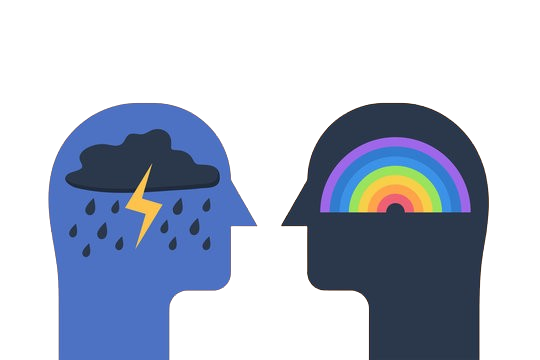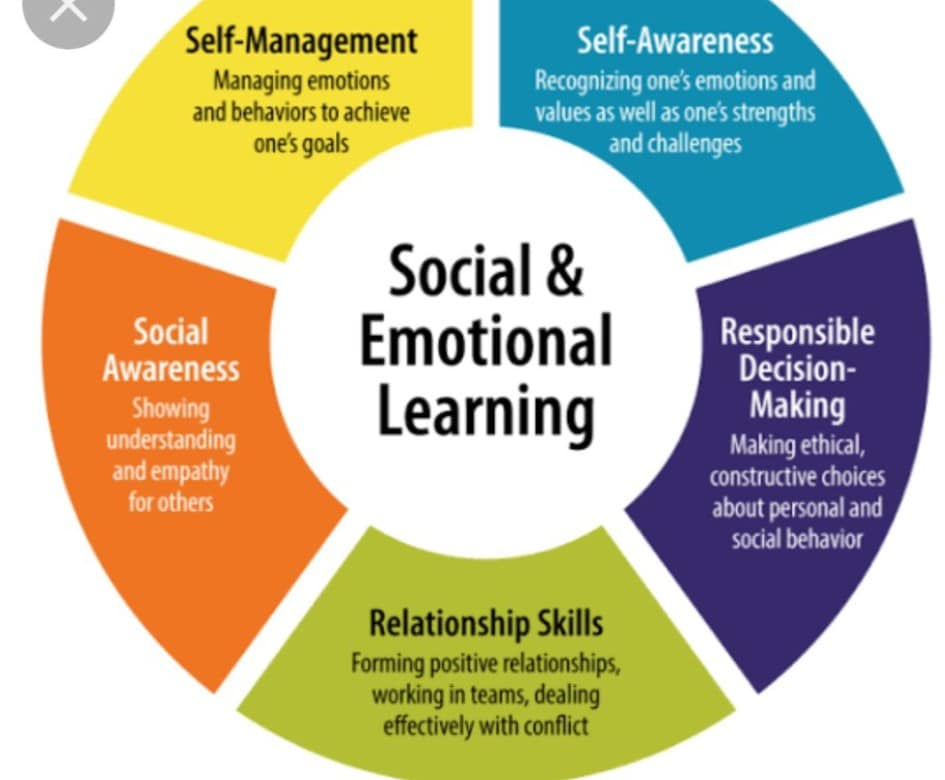What is an Adolescence? Ages and Stages of Adolescence.
What is an Adolescence? Ages and Stages of Adolescence.
17-Aug-2016
Defining Adolescence
Rajib is a 12-year-old who has just entered junior high school. Henry has noticed that his body is going through some physical changes. As a result, he has become self-conscious about his physical appearance. He has also began taking measures to insure more privacy at his home. For example, he locks the door every time he enters the bathroom, and he always takes his phone calls in his room with his door closed. Rajib also values his relationships with his friends and has begun spending more time with them. Rajib’s behaviors and physical changes are common during adolescence.
Adolescence refers to the period of human growth that occurs between childhood and adulthood. Adolescence begins at around age 10 and ends around age 21. Adolescence can be broken into three stages: early adolescence, middle adolescence, and late adolescence. Each stage has its own characteristics. Let’s take a look at each stage in more detail below.
Ages and Stages of Adolescence.
Early Adolescence
Early adolescence is the first stage and occurs from ages 10 to 14. Puberty usually begins during this stage. Like Rajib, people in this stage become aware of their rapidly changing bodies and start to worry about their physical appearance. They might experience shyness, blushing, modesty, and a greater interest in privacy.
Early adolescents may feel invincible and start to engage in risky behaviors such as smoking and alcohol use. This period is also characterized by sexual curiosity, which is usually expressed through admiration of celebrities, teen idols, and musicians. Relationships with close friends become more important than family relationships. Early adolescents start to realize that their parents are not infallible and begin to identify their own faults. It is also common for early adolescents to show acting-out behaviors.
Middle Adolescence
Middle adolescence is the second stage and occurs from ages 15 to 17. By this time, puberty has passed. Teens in this stage are extremely concerned with how they look, and they think others are concerned too. They spend a large amount of time grooming, exercising, and modifying their physical appearance. Relationships are often changing during middle adolescence. There is also worry about sexual attractiveness. Middle adolescents complain about their parents preventing them from becoming independent, and they withdraw from them.
During adolescence, teens often struggle with their body changes, mood swings and social issues. Preventative healthcare habits during ages 10 to 19, such as skin care, hygiene and healthy body size, can last a lifetime. Learn how to navigate the adolescent years, including how to foster healthy conversations with your adolescent about peer pressure, body self-image, rape and alcohol/drug abuse.
Adolescent Development
Overview
Adolescence is the period of developmental transition between childhood and adulthood, involving multiple physical, intellectual, personality, and social developmental changes. The onset of puberty signals the beginning of adolescence, and puberty now occurs earlier, on average, than in the past. The end of this developmental period is tied more so to social and emotional factors and can be somewhat ambiguous.
How is your child developing physically?
- • The adolescent growth spurt—an early sign of maturation
- • Primary sex characteristics—changes in the organs directly related to reproduction
- • Secondary sex characteristics—physiological signs of sexual maturity that do not directly involve reproductive organs
In what other ways are adolescents developing?
Adolescents are developing intellectually:
- • Adolescent thinking is on a higher level than that of children. Children are only able to think logically about the concrete, the here and now. Adolescents move beyond these limits. Adolescents can think in terms of what might be true, rather than just in terms of what they see is true. They are able to deal with abstractions, test hypotheses, and see infinite possibilities.
- • Yet, adolescents are often characterized by egocentric behaviors and attitudes.
Adolescents are also developing socially and emotionally:
- • Perhaps the most important task of adolescence is the search for identity!
- • This is often a lifelong voyage, launched in adolescence. With this search comes the struggle for independence.
How can parents support healthy adolescent development?
Are there “secrets” of good communication? While adolescence can be a trying period for both youth and their parents, the home should not become a battleground if both parents and young people make special efforts to understand one another. The following guidelines may help:
What parents can do
- • Give your undivided attention when your children want to talk. Don’t read, watch television, or busy yourself with other tasks.
- • Listen calmly and concentrate on hearing and understanding your children’s point of view.
- • Speak to your children as courteously and pleasantly as you would to a stranger. Your tone of voice can set the tone of a conversation.
- • Understand your children’s feelings—even if you don’t always approve of their behavior. Try not to make judgments. Keep the door open on any subject. Be an “open/approachable” parent.
- • Avoid belittling and humiliating your children and laughing at what may seem to you to be naive or foolish questions and statements.
- • Encourage your children to “test” new ideas in conversation by not judging their ideas and opinions, but instead by listening and then offering your own views as plainly and honestly as possible. Love and mutual respect can coexist with differing points of view.
- • Help your children build self-confidence by encouraging their participation in activities of their choice (not yours).
- • Make an effort to commend your children frequently and appropriately. Too often, we take the good things for granted and focus on the bad, but everyone needs to be appreciated.
- • Encourage your children to participate in family decision making and to work out family concerns together with you. Understand that your children need to challenge your opinions and your ways of doing things to achieve the separation from you that’s essential for their own adult identity.
What adolescents can do
- • Avoid looking at your parents as the enemy. Chances are that they love you and have your best interests in mind, even if you don’t necessarily agree with their way of showing that.
- • Try to understand that your parents are human beings, with their own insecurities, needs, and feelings.
- • Listen to your parents with an open mind, and try to see situations from their point of view.
- • Share your feelings with your parents so that they can understand you better.
- • Live up to your responsibilities at home and in school so that your parents will be more inclined to grant you the kind of independence you want and need.
- • Bolster your criticisms of family, school, and government with suggestions for practical improvements.
- • Be as courteous and considerate to your own parents as you would be to the parents of your friends.
Social Development During the Teen Years
Adolescence is the period of developmental transition between childhood and adulthood. It involves changes in personality, as well as in physical, intellectual and social development. During this time of change, teens are faced with many issues and decisions. The following addresses some of the key issues that can have an impact on a teen’s social development.
Self-esteem
Self-esteem is how you feel about yourself. The development of a positive self-image and a healthy self-esteem is very important for making a successful transition from child to adult. Here are some suggestions for helping to encourage positive self-esteem in your teen:
- • Give your child words of encouragement each day.
- • Remember to point out the things your child does right, not just the mistakes.
- • Be generous with praise.
- • Give constructive criticism, and avoid criticism that takes the form of ridicule or shame.
- • Teach your child about decision-making and make it a point to recognize when he or she has made a good decision.
- • Help your child learn to focus on his or her strengths by pointing out all of his or her talents and abilities.
- • Allow your teen to make mistakes. Overprotection or making decisions for teens can be perceived as a lack of faith in their abilities. This can make them feel less confident.
- • When disciplining your child, replace shame and punishment with positive reinforcement for good behavior. Shame and punishment can make an adolescent feel worthless and inadequate.
Peer pressure
As children grow, they begin to spend more time with their friends and less time with their parents. As a result, friends can influence a child’s thinking and behavior. This is the essence of peer pressure. Peer pressure can be a positive influence—for example, when it motivates your child to do well in school, or to become involved in sports or other activities. On the other hand, peer pressure can be a negative influence—for example, when it prompts your child to try smoking, drinking, using drugs, or to practice unsafe sex or other risky behaviors. Here are some tips to help minimize the negative influences of peer pressure and to maximize the positive:
- • Develop a close relationship with your child, and encourage open and honest communication. Children who have good relationships with their parents are more likely to seek a parent’s advice about decisions or problems.
- • Help your child understand what peer pressure is. The child will be better able to resist negative influences if he or she understands what’s happening and why.
- • Reinforce the values that are important to you and your family.
- • Nurture your teen’s own abilities and self-esteem so that he or she is not as susceptible to the influences of others.
- • Teach your child how to be assertive, and praise assertive behavior.
- • Give your teen breathing room. Don’t expect him or her to do exactly as you say all of the time.
- • Try to avoid telling your child what to do; instead, listen closely and you may discover more about the issues influencing your child’s behavior.
- • Provide discipline. Your child needs to understand that there are consequences to negative behaviors.
Tobacco, drugs and alcohol
Drug abuse is a serious problem that can lead to serious, even fatal, consequences. Research suggests that nearly 25 percent of adolescents (ages 12 to 17) have used drugs, with 16 to 18 as the peak age for drinking and drug abuse.
Teens whose parents regularly communicate with them about the dangers of drugs have a decreased risk of using tobacco, alcohol or other drugs. Following are some tips for addressing drugs, alcohol and tobacco use with your teen:
- • Set a good example. If you smoke, drink heavily or use drugs, you are teaching your child that these behaviors are acceptable.
- • Teach your child that drugs, tobacco and alcohol can harm their bodies, and that it’s OK to say “no.”
- • Teach your child how to avoid situations where others may be drinking, smoking or using drugs, and to choose friends who do not use these substances.
- • Know who your child’s friends are, and don’t allow your child to attend parties where there is no adult supervision.
- • Encourage your child to become involved in extra-curricular activities at school, a church youth group, or other programs that provide opportunities for teens to gather and socialize in a fun and safe environment.
Teens and sex
Talking with your teenager is important to help him or her develop healthy attitudes toward sex and to learn responsible sexual behavior. Openly discussing sex with your teen also enables you to provide accurate information. After all, teens will learn about sex somewhere. But what they learn might not be true, and might not reflect the personal and moral values and principles you want your children to follow. In addition, teens need to understand the possible consequences of being sexually active—including pregnancy and sexually transmitted diseases, as well as being emotionally hurt.
When you talk to your teen about sex, focus on the facts. Consider using the following list of topics as an outline:
- • Explanation of anatomy and reproduction in males and females
- • Sexual intercourse and pregnancy
- • Fertility and birth control
- • Other forms of sexual behavior, including oral sex, masturbation and petting
- • Sexual orientation, including heterosexuality, homosexuality and bisexuality
- • The physical and emotional aspects of sex, including the differences between males and females
- • Self-image and peer pressure
- • Sexually transmitted diseases
- • Rape and date rape, including how being intoxicated (drunk or high), or accepting rides/going to private places with strangers or acquaintances puts you at risk
- • How choice of clothing and the way you present yourself sends messages to others about your interest in sexual behavior (for example, tongue piercing, wearing low-cut clothing)
Tattoos and piercing
Teens of every generation have their fads. Most teenage fads are harmless and eventually fade away without permanent damage. Unfortunately, some of today’s most popular fads—particularly tattoos and body piercing—can be permanent and can affect your teen’s health. Here are some ideas on how to discuss these fads with your teen:
- • Don’t wait until your child reaches the teen years to talk about tattoos and piercing. Many younger children look up to teens as role models.
- • Explain the possible dangers of tattoos and piercings, such as infection or allergic reactions. The risk of infection increases if a tattoo or piercing is done under non-sterile conditions.
- • Ask your teen to imagine how multiple piercings or tattoos might affect his or her future career or relationships.
- • Explain that a tattoo may not turn out the way you want, and you can’t take it back if you don’t like it. Further, tattoo removal is very expensive and can be quite painful. In some cases, tattoo removal may cause permanent discoloration of the skin.
Depression and suicide
It is common for teens to occasionally feel unhappy. However, when the unhappiness lasts for more than two weeks and the teen experiences other symptoms (see below), then he or she may be suffering from depression.
There are many reasons why teenagers become unhappy. High-stress environments can lead to depression. Teens can develop feelings of worthlessness and inadequacy over school performance, social interaction, sexual orientation or family life. If friends, family or things that the teen usually enjoys don’t help to improve his or her sadness or sense of isolation, there’s a good chance that he or she is depressed. Often, depressed teens will display a striking change in their thinking and behavior, lose their motivation or become withdrawn. The following are the major signs of depression in adolescents:
- • Sadness, anxiety or a feeling of hopelessness
- • Loss of interest in food or compulsive overeating that results in rapid weight loss or gain
- • Staying awake at night and sleeping during the day
- • Withdrawal from friends
- • Rebellious behavior, a sudden drop in grades or skipping school
- • Complaints of pain including headaches, stomachaches, low back pain or fatigue
- • Use of alcohol or drugs and promiscuous sexual activity (These are common ways teens cope with depression.)
- A preoccupation with death and dying (This often is a cry for help and usually indicates a serious case of depression.)
Depression is a serious problem, but it also is treatable. If you suspect your teen is depressed, tell your child’s health care professional and seek help right away.
Suicide is a serious problem within the teen population. Adolescent suicide is the second leading cause of death among youth and young adults in the United States. It is estimated that 500,000 teens attempt suicide every year, with 5,000 succeeding.
Warning signs of suicide include:
- • Threatening to kill oneself
- • Preparing for death, giving away favorite possessions, writing goodbye letters or making a will
- • Expressing a hopelessness for the future
- • Giving up on oneself, talking as if no one else cares
If your teenager displays any of these behaviors, you should seek help from a mental health professional immediately.
More Blog
Mental health needs to notice in Bangladesh
12-Sep-2024Like other countries Mental health is one of the warning issues in Bangladesh gradually. Though the immense consequences of this... read more
Happiness tips:
02-Apr-2022Happiness is also one of the important aspects of positive psychology and wellbeing. Do something you enjoy every day, e... read more
What is SEL?
31-Jan-2022Social-emotional learning, commonly referred to by its acronym, SEL, is a method of promoting holistic child development by teac... read more



